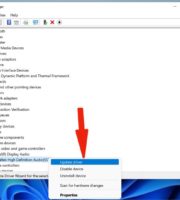In this digital information technology world, Python is considered as one of the most popular languages used by data scientists for various data science projects and applications. The Python programming language is a broad line that provides great functionality to deal with statistics, math, and scientific functions. Day by day, Python is gaining popularity because it has a lot of packages, such as TensorFlow, Theano, Keras, etc., which are very useful for data scientists in developing deep learning algorithms. The biggest advantage of Python is its fast performance among all the languages available. It is known as a company that is at the forefront of scaling. That’s why some organizations choose Python for data science for their business goals.
In fact, Python is an essential part of a data analyst’s toolbox as it is specifically designed for performing repetitive tasks and data manipulation. When combined with data science, Python is more flexible and makes programming integration easy with complex systems. So Python programming skills are in high demand as those who are learning it can get countless opportunities in data science, artificial intelligence, web development and machine learning. Python is required as it is used in data science to build solid skills in the fundamental concepts required for data science. So there is a great demand for professionals skilled in the python programming language.
This article will focus on how one can master Python programming for data science jobs.
What is Python Programming?
Simply Python is known as an object-oriented, interpreted, and high-level programming language with dynamic semantics. It deals with dynamic imports, modules, exceptions, and very high-level dynamic data types and classes that can support many programming paradigms beyond object-oriented programming. Python is a very popular language among data scientists and other data professionals. It helps them create websites and software, automate tasks, and perform successful data analysis. Python is designed to be advanced, so it can be applied to many different classes of problems.
Python programming language is specially used for activities like Web Development (Server Side), Mathematics, Software Development, System Scripting etc. It can also be used as software to create Workflow. It is also useful for processing large data and performing complex math operations. Python is also used for rapid prototyping or production-ready software development. It can read and modify files and can be connected to the database system. It is a very flexible language that can be used on different platforms like Mac, Linux, Windows, Raspberry Pi, etc. It is a simple language because it has very easy syntax similar to the language. English.
Tell us about some features of Python that one should master and apply for data science jobs.
How can one master Python?
The Python programming language is a language of choice for data scientists. So learning Python is like reaching a milestone in the journey of a data science career. The following mentioned are some of the important steps to learn and master Python.
- Learn Basics of python- It is known that Python is a language that is easy to read, write and understand. So the first step is to learn the basics of Python programming along with an introduction to data science if you are new. You can learn Python by taking online courses, Data Science Bootcamps, college programs, or self-taught. You can also join an online community where you can start learning with others. It will also be helpful to network with other members of the community and build relationships with industry experts who can guide you in your data science career. To learn Python thoroughly, spend some time learning Jupyter, the different data types, the data structures provided by Python, the control flows, and the different operations on each data type.
- Start- Practice Continuous practice is the key to success. The more you practice, the closer you get to success. Dive into hands-on learning that can help you speed up your learning. You can start practicing with python projects that can enhance your learning. It may include Jailbreak, Profitable App Profile for App Store and Google Play Markets, Explore eBay Car Sales Data, Discover Hackers Posts, etc. You can also develop Python gaming application as a beginner. Other ways to learn Python are by reading tutorials, blog posts, looking at other people’s tutorials or open source code to find new ideas. You can use resources like Kaggle and the UCI Machine Learning Repository to get datasets. So it is imperative here to start practicing with basic data analysis and data visualization.
- Learn about Python Libraries- Python is a rich language that has many libraries and predefined functions stored in modules and packages. You have to learn the four most important Python Libraries: NumPy, Pandas, Matplotlib and Scikit-Learn. The first two are best for exploring and playing with data. And on the other side, Matplotlib is a data visualization library used to create graphs basically used in data visualization. These libraries can help you solve business problems in the best possible way.
- Learn Visualization- Data is useless unless it has been properly interpreted. Data visualization skills are also an important part of the data science journey along with Python. Here, data visualization is required to better understand and find unseen patterns. You can use important visualization libraries like pandas profile, pandas plot, matplotlib and seaborn which can benefit you in many ways.
- Learn Data Science Techniques- It is also an important part of mastering Python skills to get a data science job while learning and implementing data science techniques like math, statistics, deep learning, and machine learning. So obviously you can’t learn Python in a silo because you’re required to learn, hone, and implement advanced data science and fundamentals.
- Make Portfolio- Now is the right time to create a corporate portfolio that can showcase your skills, expertise, experience and real project works. It can help you draw recruiters’ attention to your portfolio and select you for data science job positions.
Besides these important steps, there are many more steps that you can follow and master Python skills through hard practice and smooth data science work.








